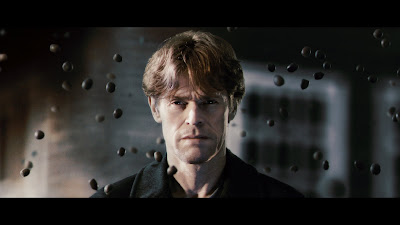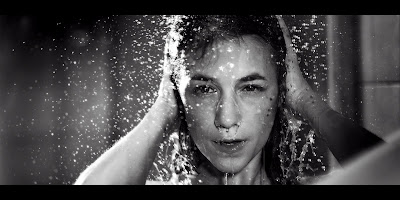
Rembrandt's J'Accuse. 2008. Written and directed by Peter Greenaway. Produced by Femke Wolting, Bruno Felix, and Kees Kasander. Cinematography by Reinier van Brummelen. Edited by Elmer Leupen. Music by Giovanni Sollima and Marco Robino. Production designed by Maarten Piersma. Costume design by Marrit van der Burgt. Sound by Bram Boers.
Cast: Peter Greenaway (Himself), Martin Freeman (Rembrandt van Rijn), Eva Birthistle (Saskia Uylenburgh), Jodhi May (Geertje), Emily Holmes (Hendrickje Stoeffels), Jonathan Holmes (Ferdinand Bol), Michael Teigen (Carel Fabritius), Natalie Press (Marieke).
Peter Greenaway’s new film, Rembrandt’s J’Accuse, in which he subjects Rembrandt’s famous 1642 painting The Night Watch to intense forensic, visual, and historical analysis, is one of Greenaway’s very best films, and certainly his best in well over a decade. I have been greatly disappointed by most of Greenaway’s recent output, for example The Tulse Luper Suitcases, in which Greenaway puts into practice his long-standing theories about what he sees as cinema’s currently impoverished state, which he sees as essentially illustrated literature, and how Western culture is text-based instead of visually-based, leading to what he sees as a woeful lack of visual literacy in the public at large. (Early on in Rembrandt’s J’Accuse, Greenaway gives voice on screen to these opinions once more, in the scolding, schoolmarmish tone that is probably his most off-putting and least attractive quality.) Greenaway’s recent films have become increasingly impenetrable and hermetic, seemingly made only for an audience of one – Greenaway himself. The alternative he has come up with to conventional cinema, using text, calligraphy, and frames within frames within frames to form an ornate collage, however visually elegant it often is, turns out in practice to be not quite as compelling as he thinks.
So it is with genuine pleasure (and relief) that I say that with Rembrandt’s J’Accuse, Greenaway has finally come up with a film that puts his visual and intellectual arsenal to brilliant effect, turning Rembrandt’s The Night Watch into evidence of an elaborate murder conspiracy. (Call it CSI: Amsterdam.) Greenaway appears on screen throughout to state the case for the prosecution, namely that Rembrandt’s painting is his “J’accuse,” or accusation of guilt towards the perpetrators of a conspiracy on the part of a group of Dutch military officers to murder their captain to gain more power for themselves. The officers planned to disguise this murder as a military accident. Greenaway is our guide to the evidence for this conspiracy, all of which he believes can be found within the frame of Rembrandt’s painting. His running voiceover and visual presence (usually in a box in the bottom center of the screen) relates 31 clues to the murder conspiracy (Greenaway’s well-documented obsession with numbers and lists continues unabated in this film) that can be found in the painting. Fully-staged reenactments with actors are peppered throughout to illustrate Greenaway’s thesis.
Greenaway identifies The Night Watch as the beginning of Rembrandt’s popular and economic decline, which he sees as a result of the successful attempt by the powers that were to suppress and bury Rembrandt’s accusation and force him into a later life of poverty and obscurity. As Greenaway intones at the film’s conclusion, “It is imperative that we reopen the case.” Greenaway uses the canvas of Rembrandt’s masterpiece to create one of his own, a film that is simultaneously a documentary, a murder mystery, an art history lecture, a political history of Amsterdam, and a seminar on the arts of both painting and visual analysis, and is endlessly fascinating and compelling.
Rembrandt’s J’Accuse is at Film Forum now through November 3. Click here to purchase tickets.
.jpg)
.jpg)








